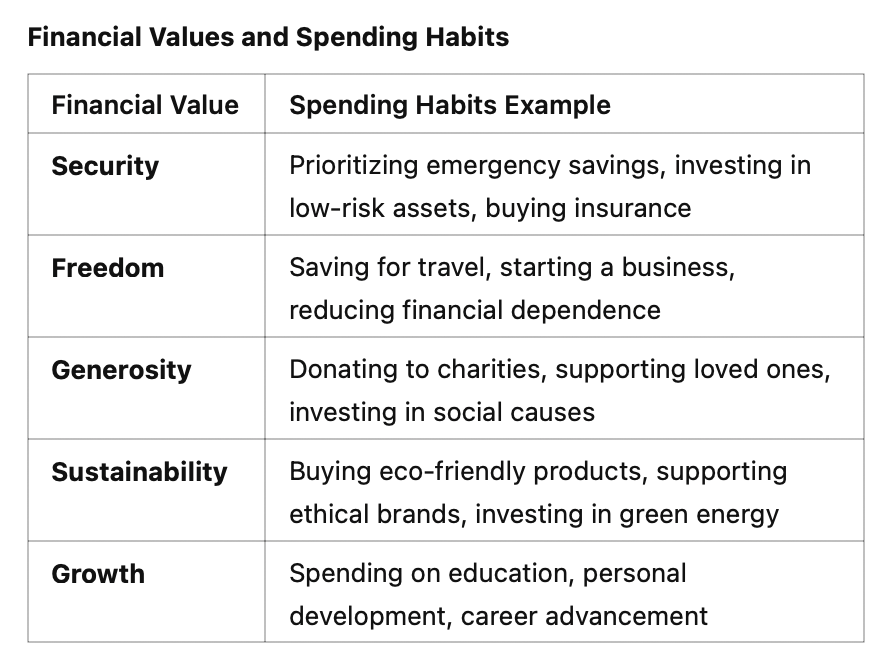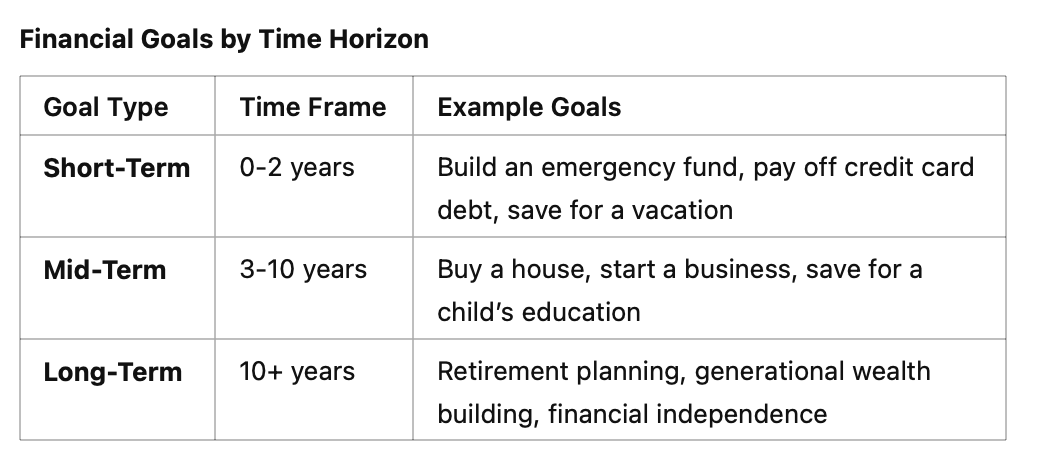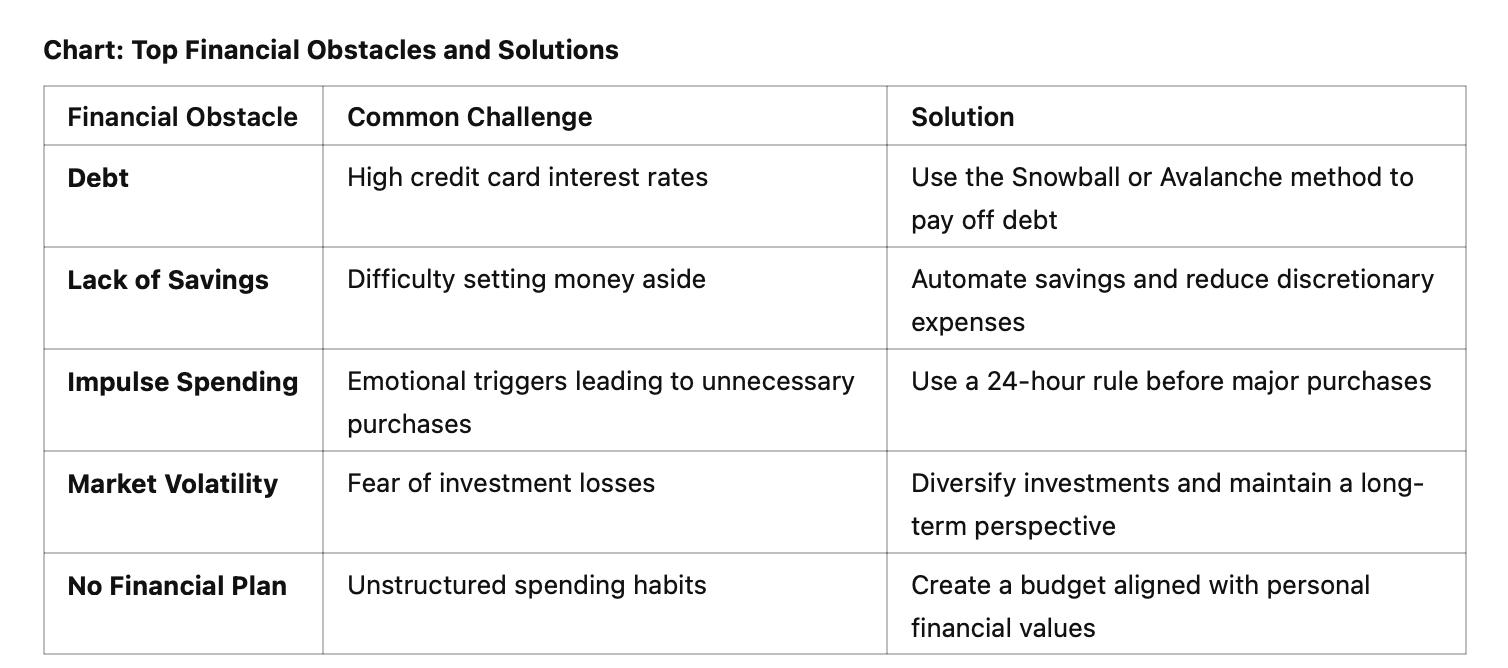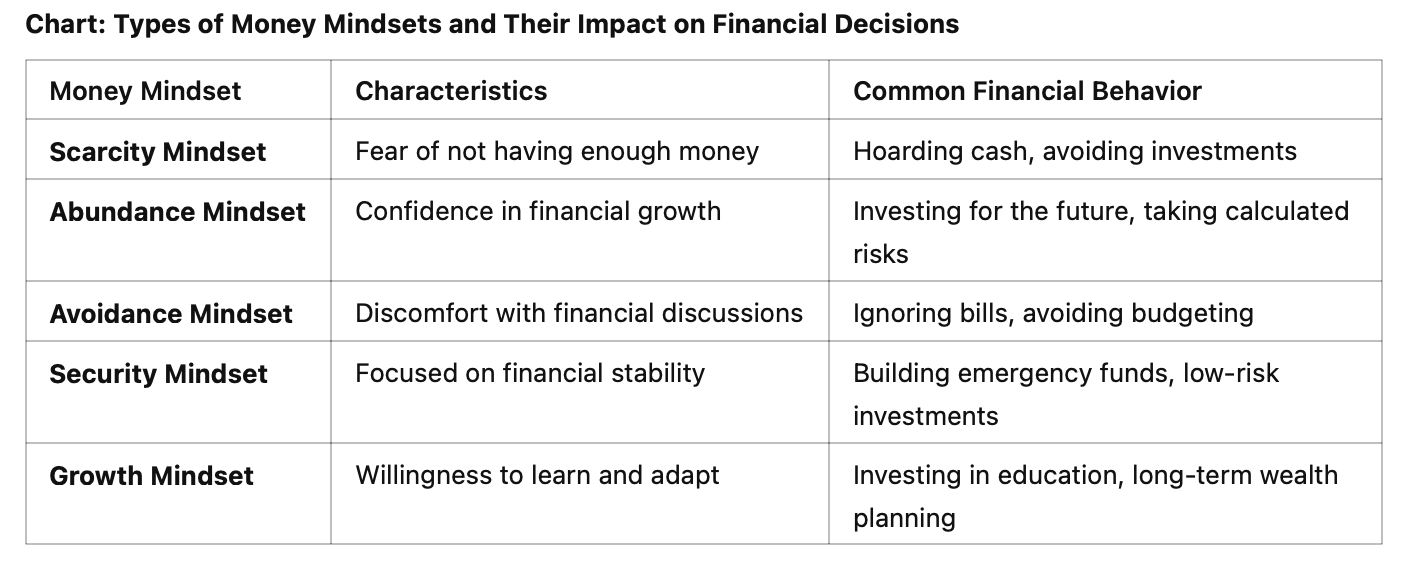
What Are Financial Values and How to Align Your Spending with Them
How to Achieve Financial Goal Alignment by Aligning Your Spending with Your Values
Discover how to make your spending habits align with your core financial beliefs, goals, and money values. Understanding your money values is important as it helps ensure that your financial decisions reflect your true priorities and beliefs. This alignment is a crucial part of managing finances and your financial journey, helping you celebrate milestones and stay motivated by ensuring your financial strategies reflect your personal values.
Defining Your Financial Values
Defining your financial values is the first step towards aligning your spending habits with your core beliefs and goals. Your financial values are the principles and priorities that guide your financial decisions. They reflect what is truly important to you when it comes to money and how you choose to allocate your resources. Consider how money affects different areas of your life, such as relationships, health, and long-term planning, to gain a comprehensive understanding of your financial values. Defining your financial values is the first step towards creating a meaningful financial life that aligns with your core beliefs and goals.
To define your financial values, take some time to reflect on what matters most to you. Consider your long-term financial goals, your personal values, and how you want to use your money to support the life you desire. Ask yourself questions such as:
-
What are my top financial priorities?
-
What do I want to achieve with my money?
-
What kind of lifestyle do I want to lead?
-
What do I value most in my financial decision-making?
By understanding your financial values, you can create a clear vision of what you want to achieve with your money and make spending decisions that align with your goals and priorities. Creating a financial plan that aligns with your defined financial values is crucial for achieving these objectives.
What are Financial Values?
Financial values are the core principles and beliefs that guide your financial decisions and behaviors. They serve as a compass for how you manage your money, influencing every aspect of your financial life. Much like your personal values, financial values shape your behavior and play a crucial role in decision-making. Understanding your financial values is essential for creating and maintaining a financial plan that aligns with your goals.
Your financial values might include principles such as security, freedom, generosity, or sustainability. These values influence how you prioritize your spending, saving, and investing. For instance, if you value security, you might prioritize building an emergency fund and investing in low-risk assets. On the other hand, if you value freedom, you might focus on saving for travel or starting your own business.
By identifying and understanding your financial values, you can make more intentional financial decisions that align with your core beliefs and long-term objectives. This alignment can lead to a more fulfilling and purpose-driven financial life.
Understanding Your Financial Objectives
Understanding your financial objectives is crucial to achieving long-term financial success. Your financial objectives should align with your values, goals, and priorities. To start, identify both your short-term and long-term goals. Short-term goals might include saving for a down payment on a house, paying off high-interest debt, or building an emergency fund. Long-term goals could encompass retirement planning, funding education, or achieving financial independence.
Once you have identified your goals, take a comprehensive look at your financial situation, including your income, expenses, assets, and debts. This assessment will help you determine how much you need to save and invest to reach your objectives. It’s also essential to consider your risk tolerance and time horizon when setting your financial objectives.
A certified financial planner can be invaluable in this process. They can help you understand your financial objectives and create a personalized financial plan. With their expertise, you can identify areas for improvement, develop effective investment strategies, and receive guidance on managing your finances. By aligning your financial objectives with your own values and goals, you set a clear path toward a secure financial future.
Self-Reflection and Awareness
Identifying your core financial values requires self-reflection, understanding of your financial goals, and an honest examination of your financial behaviors. Start by considering what’s important to you, both in the short and long term. Ask yourself questions like “What drives my financial choices?” and “What do I tend to prioritize when it comes to money?” Reflecting on these questions can help you uncover the values that guide your financial decisions.
Take some time to think about your past financial decisions and what motivated them. Were they driven by a desire for security, freedom, or perhaps generosity? Understanding these motivations can provide valuable insights into your financial values. This self-awareness allows you to re-evaluate your financial behaviors and decide whether they align with your core values and goals.
By gaining a deeper understanding of your financial values, you can make more informed and intentional financial decisions. This process of self-reflection and awareness is a crucial step in aligning your spending with your financial values and achieving your financial goals.
Setting Financial Goals and Targets
Setting financial goals and targets is a crucial step in achieving financial success. Financial goals can be short-term, mid-term, or long-term, and they should be aligned with your personal values and priorities. It involves identifying what you want to achieve, setting specific targets, and creating a plan to achieve them.
When setting your financial goals, consider how you want to invest money in ways that align with your personal values and priorities.
To set effective financial goals, start by identifying your financial priorities. Whether it’s saving for a down payment on a house, paying off debt, or building an emergency fund, knowing what matters most to you is essential. Next, set specific, measurable, achievable, relevant, and time-bound (SMART) goals to ensure they are realistic financial goals. For example, instead of saying “I want to save money,” specify “I want to save $5,000 for an emergency fund within the next 12 months.”
Prioritize your goals based on their importance and urgency. Some goals may need immediate attention, while others can be tackled over a longer period. Create a detailed plan to achieve your goals, including specific steps and timelines. Regularly review and adjust your goals as needed to stay on track.
Key performance indicators (KPIs) can help you track your progress toward your financial goals. KPIs are measurable values that demonstrate how effectively you are achieving your objectives. Examples of financial KPIs include your savings rate, debt-to-income ratio, credit score, investment returns, and emergency fund balance.
By setting financial goals and targets, you create a roadmap for achieving financial security and success. This structured approach ensures that your financial planning process is aligned with your personal values and long-term aspirations.
Understanding Your Money Mindset
Your money mindset is shaped by your life experiences, upbringing, and personal values. It influences your financial behaviors and decisions, and it can either support or hinder your financial goals. Understanding your money mindset is essential for making intentional financial decisions and achieving financial success.
To understand your money mindset, start by reflecting on your childhood experiences with money. Consider how your parents handled finances and what lessons you learned from them. Did they model good financial habits, or did they struggle with money management? Recognizing these influences can help you understand your current financial behaviors.
Understanding your tolerance for market volatility is also crucial, as it helps you make investment decisions that align with your personal values and financial goals.
Identify your personal values and how they relate to money and financial decisions. Are you driven by security, freedom, generosity, or something else? Understanding your values can help you align your financial goals with what truly matters to you, ultimately leading to better management of your personal finances.
It’s also important to recognize any negative or limiting beliefs about money that may be holding you back. Common negative beliefs include thinking that money is inherently bad or that you don’t deserve financial success. Developing a growth mindset and being open to learning and improving your financial knowledge and skills can help you overcome these barriers.
By understanding your money mindset, you can identify areas for improvement and develop strategies for change. This self-awareness allows you to make more intentional financial decisions that align with your values and goals, ultimately building a healthier relationship with money and achieving financial success.
Creating a Budget that Supports Your Objectives
Creating a budget that supports your objectives is essential for achieving financial success. A budget is a plan for how you want to allocate your financial resources to achieve your goals. It should be based on your financial priorities, values, and goals. Your budget should reflect your money values, ensuring that your financial resources are allocated in a way that supports your core beliefs and priorities.
To create a budget that supports your objectives, start by identifying your financial priorities and goals. Track your income and expenses to understand where your money is going. Regularly review your financial statements to gain insights into your financial health. This step is crucial for gaining a clear picture of your financial health.
Categorize your expenses into needs, wants, and savings. Needs are essential expenses like housing, utilities, and groceries. Wants are non-essential items that bring you joy but aren’t necessary for survival. Savings include contributions to your emergency fund, retirement accounts, and other financial goals.
Allocate your income into each category based on your priorities and goals. Ensure that your budget reflects your personal values and supports your long-term financial targets. Regularly review and adjust your budget as needed to accommodate changes in your financial situation or goals.
A budget should be a dynamic tool that helps you achieve your financial objectives. It should be flexible and adaptable to changing circumstances, and it should be aligned with your personal values and priorities. By creating a budget that supports your objectives, you can achieve financial stability and security, make progress toward your financial goals, and build wealth for long-term financial success.
Implementing Mindful Spending Strategies and Building an Emergency Fund for Financial Health
Once you have defined your financial values, it's time to implement mindful spending strategies to ensure your spending aligns with your beliefs and goals. Implementing mindful spending strategies is an essential part of your overall financial strategy to ensure your spending aligns with your beliefs and goals.
Here are some practical tips to help you practice mindful spending:
-
Create a budget: A budget is a powerful tool that allows you to allocate your money according to your financial values. It helps you track your income and expenses, prioritize your spending, and make intentional choices about where your money goes.
-
Think before you spend: Before making a purchase, pause and ask yourself if it aligns with your financial values. Consider whether the item or experience will bring you long-term satisfaction and contribute to your financial goals.
-
Avoid impulse buying: Impulse purchases often lead to buyer's remorse and can derail your financial plans. Practice self-discipline and give yourself time to think before making unplanned purchases.
-
Focus on quality over quantity: Instead of buying cheap, low-quality items that don't align with your values, invest in high-quality products that will last longer and provide more value in the long run.
By implementing these mindful spending strategies, you can ensure that your spending decisions are in line with your financial values and contribute to your long-term financial well-being.
Overcoming Obstacles to Financial Success
Overcoming obstacles to financial success requires discipline, patience, and persistence. One of the most significant hurdles is debt, particularly high-interest debt like credit card balances. Tackling this challenge involves creating a plan to eliminate it. Consider consolidating your debt into a lower-interest loan or credit card, and commit to making regular payments to reduce the principal balance.
Understanding how money affects various aspects of your life can help you identify and overcome obstacles to financial success.
Another common obstacle is a lack of savings. Building an emergency fund is crucial to avoid falling into debt when unexpected expenses arise. Aim to save three to six months’ worth of living expenses in an easily accessible savings account. This financial cushion provides peace of mind and stability.
Investing can also be daunting for some, but it’s a vital component of long-term financial success. Diversifying your portfolio with stocks, bonds, and other assets can help you achieve your financial goals. If you’re unsure where to start, consider working with a financial advisor to develop a personalized investment strategy. By addressing these obstacles head-on, you can pave the way for a more secure financial future.
Working with a Financial Advisor
Working with a financial advisor can be a game-changer in achieving long-term financial success. A financial advisor can help you create a personalized financial plan, provide investment strategies, and offer guidance on managing your finances.
When selecting a financial advisor, consider their experience, credentials, and fees. Look for a certified financial planner (CFP) or a chartered financial analyst (CFA) who has experience working with clients with similar goals and objectives. These professionals have the expertise to help you navigate complex financial decisions and create a plan that aligns with your values and priorities.
A financial advisor can help you identify areas for improvement, provide guidance on managing your finances, and offer tailored investment strategies. A financial advisor can also help you navigate market volatility by tailoring investment strategies that align with your values and risk tolerance. They can also help you create a personalized financial plan that reflects your unique financial situation and goals. By working with a financial advisor, you gain a trusted partner in your financial journey, helping you stay on track and achieve your long-term objectives.
Achieving Long-Term Financial Success on Your Financial Journey
Achieving long-term financial success requires discipline, patience, and persistence. It starts with creating a personalized financial plan that aligns with your values, goals, and priorities. Begin by identifying your short-term and long-term goals, and assess your financial situation, including your income, expenses, assets, and debts.
Create a budget that allocates your income towards your goals, ensuring that your spending aligns with your financial values. Regularly invest money in a diversified portfolio to build wealth over time, ensuring that your investments align with your personal values and long-term goals. Regularly invest in a diversified portfolio of stocks, bonds, and other assets to build wealth over time. It’s also essential to monitor your progress regularly and make adjustments as needed to stay on track.
Consider working with a financial advisor to create a personalized financial plan and provide guidance on managing your finances. With their expertise, you can develop effective investment strategies and make informed financial decisions. By staying disciplined, patient, and persistent, you can achieve long-term financial success and secure your financial future.
Regular Review and Adjustment
As life changes, so may your financial values and goals. Regularly reviewing your financial plan is essential to ensure that it continues to align with your values. This process allows you to make necessary adjustments as your circumstances evolve, ensuring that your financial decisions remain in harmony with your core beliefs and objectives.
Set aside time periodically to review your financial plan and assess whether it still reflects your current values and goals. Consider any significant life changes, such as a new job, marriage, or the birth of a child, and how these events might impact your financial priorities. By regularly reviewing and adjusting your financial plan, you can stay on track and achieve a sense of fulfillment and peace of mind in your financial journey.
This ongoing process of review and adjustment helps you remain flexible and responsive to changes in your life. It ensures that your financial decisions continue to support your long-term goals and reflect your core values, ultimately leading to a more satisfying and successful financial life.
Showcasing Value-Aligned Spending and Financial Behaviors with a Certified Financial Planner in Action
To better understand how value-aligned spending works in practice, let’s take a look at some real-life examples:
-
Sarah’s Financial Values: Sarah values sustainability and environmental responsibility. She chooses to spend her money on eco-friendly products, renewable energy sources, and ethical companies. She invests in companies that prioritize environmental sustainability and divests from industries that harm the planet.
-
John’s Financial Values: John’s top financial priority is financial independence. He spends his money on education and personal development to increase his earning potential. He also saves and invests a portion of his income to build wealth over time. He avoids unnecessary expenses and focuses on long-term financial growth.
-
Lisa’s Financial Values: Lisa believes in giving back to her community. She donates a portion of her income to charitable causes and volunteers her time to support local organizations. She also prioritizes spending on experiences that create memories and contribute to her personal growth.
By understanding and living by your own values, you can make financial decisions that lead to greater personal and professional fulfillment.
These examples show that value-aligned spending is not about depriving yourself or being overly frugal. It’s about consciously choosing how you use your money to support your financial values and achieve your unique financial goals. This ongoing financial journey involves continuously aligning your spending with your values to ensure both financial success and overall life satisfaction. Working with financial advisors can also help you align your spending with your values and achieve your unique financial goals.
Conclusion
Achieving long-term financial success requires discipline, patience, and persistence. It's essential to understand your financial objectives, overcome obstacles to financial success, and work with a financial advisor to create a personalized financial plan.
By following these steps, you can achieve long-term financial success and reach your goals. Remember to stay disciplined, patient, and persistent, and don't be afraid to seek help when needed. With the right mindset and guidance, you can achieve financial freedom and live the life you deserve.
%20512x512%20google%20store%20app%20logo%20SEPT%2024%2c%202025%20(4)-png.png?width=51&height=51&name=USE!!%20)%20512x512%20google%20store%20app%20logo%20SEPT%2024%2c%202025%20(4)-png.png)








